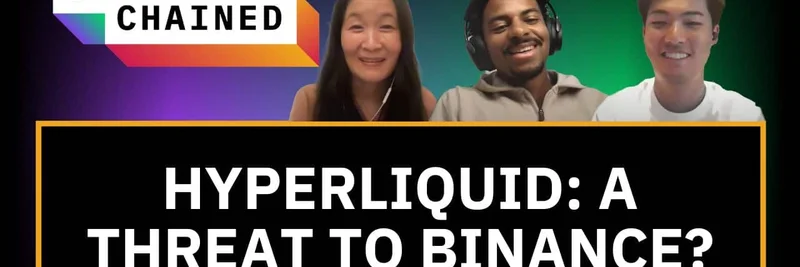In a recent tweet from crypto journalist Laura Shin, she highlighted a clip from her Unchained podcast where Ryan Watkins, co-founder of Syncracy Capital, dives into the growing tension between centralized exchanges (CEXs) and perpetual decentralized exchanges (perp DEXs). Posted on October 3, 2025, the tweet quickly sparked discussions in the crypto community about the future of trading platforms. For those new to the terms, perp DEXs are decentralized platforms that allow users to trade perpetual futures contracts—essentially, bets on asset prices without expiration dates—directly on the blockchain, without needing a middleman like a traditional exchange.
The Rise of Onchain Perps and Hyperliquid's Dominance
Watkins points out that perps have become crypto's ultimate cash cow, generating massive revenues through trading fees and liquidations. With the emergence of platforms like Hyperliquid, these high-volume trades are shifting onchain, meaning they're happening directly on blockchain networks rather than on centralized servers. Hyperliquid, in particular, has surged in popularity, offering seamless leverage trading that's attracting traders away from giants like Binance.
In the podcast clip shared in the tweet, Watkins explains, "Centralized exchanges are more scared of perp DEXs than they've ever been in their existence. And decentralized exchanges across both spot and perps just continue to take market share." He reframes the debate not as one specific DEX versus another, but as a broader battle: "To me, it's just exchanges versus exchanges, Hyperliquid versus the field."
This shift is backed by impressive numbers—perp DEX volumes recently topped $1 trillion a month for the first time, as noted in the episode summary on Unchained's website. Platforms like Aster, backed by former Binance Labs (now YZi Labs), are also climbing the charts, raising questions about organic growth versus strategic boosts.
Why CEXs Like Binance and Bybit Are Reacting
The fear among CEXs stems from losing their grip on the lucrative perps market. Watkins highlights how Binance and Bybit are scrambling to launch their own DEXs to stay relevant. "It's no surprise that you see not only Binance but you even see Bybit building its own decentralized exchange," he says. "They realized that, okay, if trading is going to move onchain, then we need a piece of that so we can capture the value."
This move is a defensive play. As more trading migrates to decentralized setups, CEXs risk losing users who prefer the transparency, self-custody, and lower fees of onchain platforms. For Binance, which has dominated crypto trading for years, the threat is existential—hence the title of the episode, which questions if Hyperliquid could "threaten the very existence" of CEXs.
Implications for Meme Token Traders
At Meme Insider, we're particularly interested in how this affects meme tokens, which thrive on high-volatility, leverage-fueled trading. Meme coins like those on Solana or Base often see explosive action on perp DEXs, where traders can go long or short with up to 100x leverage without KYC hassles. Hyperliquid has become a hotspot for meme perp trading, offering liquidity pools that rival CEXs while keeping everything onchain.
The episode also teases Solana's potential role in the next wave of perp DEX wars, suggesting faster, cheaper networks could accelerate meme token adoption. If Ethereum wants to compete, it might need to ramp up its scaling solutions. For blockchain practitioners, this means staying ahead by exploring these platforms—understanding perp mechanics can give you an edge in spotting the next big meme pump.
Community Reactions and What's Next
The tweet garnered quick responses, with users like @PunkguinQueen joking, "CZ sweating already?" and @ajitoraon51 questioning if onchain perps can match CEX liquidity. These echo the broader debate: while DEXs offer freedom, they still face challenges like gas fees and user experience.
If you're into meme tokens or crypto trading, check out the full Unchained Episode 915 for deeper insights from Watkins and co-guest Sunny Shi. As the lines between CEXs and DEXs blur, one thing's clear: the future of crypto trading is onchain, and meme enthusiasts stand to benefit the most. Stay tuned to Meme Insider for more updates on how these trends shape the meme economy.



